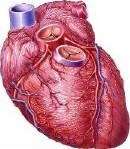Study Sheds Light on Origins of Sudden Cardiac Death
New imaging techniques help researchers probe ventricular fibrillation.
|
E-mail this article
Subscribe to news
Printer friendly version
|

(SOURCE: University of Michigan Health System, news release, Dec. 20, 2007)
THURSDAY, Dec. 27 (HealthDay News) -- New information about a deadly heart rhythm disorder called ventricular fibrillation may help lead to better ways of identifying people at risk of sudden cardiac death and new treatments to help reduce their risk.
The findings are based on a study by a team of researchers from Canada, Spain and the United States.
The study found that the abrupt disruption of electrical activity within the heart muscle is organized into spiral vortices -- also called rotors -- that prevent the heart's blood pumping chambers from working in sync, something that's required for normal heart function.
The researchers looked at a number of different animal species, ranging from mice and guinea pigs to sheep and humans, and found that the frequency of ventricular fibrillation activity can be "scaled" using a universal formula related to body mass. This same method can also be used to determine the size of the core of the spiral vortices, the researchers said.
"The discovery that the rate of fibrillation changes according to body size is exciting, not only because it brings new and interesting knowledge from the point of view of evolutionary biology, but most important because it erases previous concerns in science about the relevance of studies in small animals like mice to understand the most lethal cardiac arrhythmia in people," senior author Dr. Jose Jalife said in a prepared statement.
The study was published in this week's issue of the Proceedings of the National Academy of Sciences.
The scientists said these findings, made using sophisticated imaging techniques they developed, can help improve translation of ventricular fibrillation research results from animals to humans. For example, genetic variations in mice with ventricular fibrillation may also be explored in humans, and research on why VF begins, and methods of preventing it, can be studied in animals before being applied to humans, the researchers said.
More information
The American Academy of Family Physicians has more about heart rhythm problems. 
Copyright © 2007 ScoutNews, LLC. All rights reserved. 
HealthDayNews articles are derived from various sources and do not reflect federal policy. healthfinder.gov does not endorse opinions, products, or services that may appear in news stories. For more information on health topics in the news, visit the healthfinder.gov health library.